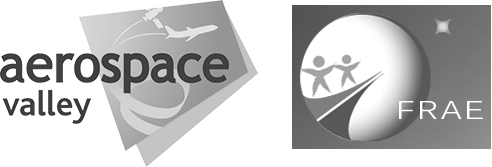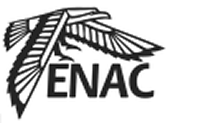Tangible Embodied Space for Pilots-Systems Interaction
The AIRTIUS Project
AIRTIUS is a multidisciplinary project, with fundamental and applied components, which aims to address the needs of industrial technological development of pilots-systems interfaces in aircraft cockpits while ensuring aviation safety. The project is funded by the French National Research Agency (ANR) and the Fondation de Recherche pour l'Aéronautique et l'Espace (FRAE)
The AIRTIUS consortium brings together five partners: two academic partners and major aeronautical schools in France, ENAC (Ecole Nationale de l'Aviation Civile) and ISAE (Institut Superieur de l'Aeronautique et de l'Espace) and three industrial partners, innovative SMEs of the future french southwestern Region (Midi-Pyrénées / Languedoc-Roussillon): Astrolab, Ingenuity i / o and Intactile Design.
Problem
Commercial airliners cockpits gathers numerous instrument panels realated to the different aircraft systems, using display screens as well as physical controls (knobs, switches, etc.). These cockpits are evolving towards aggregated systems, fewer but larger screens, and a progressive digitalization of pilot-system interfaces. New flight-deck designs are trending towards a rationalization of cockpits equipment by replacing them with touchscreens. The objective for manufacturers is to handle the increasing complexity of systems with greater flexibility and lower costs.
These evolutions present strong limits in critical contexts. Unlike physical controls, which take advantages of the sense of touch and proprioception, touch screens are not well suited for eyes-free interactions and are not reliable in dynamic environments subjected to vibrations and acceleration. For safety- critical systems, it is yet important to ensure the reliability both in normal and degraded operational situations (smoke inside the cockpit, turbulences, or high levels of stress or cognitive load). Moreover, compared to physical controls, touch interactions are not able to reinforce mutual awareness between pilots.
Scientific and Technological Objectives
We assume that a mixed approach based on touch screens and physical objects will better take into account the sensory motor skills of pilots and allow for more effective collaboration; and thereby to overcome the disadvantages of touch interactions in safety-critical systems.
The key scientific objective of the project is to develop and evaluate this hypothesis through the exploration of mixed interactive systems for the cockpit. We will focus on haptic, tangible and organic technologies. Haptic improves touch screens by providing tactile feedbacks (vibration, pressure, texture information) which stimulate the mechanoreceptors of the fingertip. Tangible interactions add a proprio-kinesthetic dimension and can increase mutual awareness. Finally, organic user interfaces, which shapes are dynamically chosen so as to better support the needs of the user interface, will bring an answer to an inherent constraint in the cockpit: avoiding the presence of loose objects.
The technical objective of the project is to design and implement mixed interactive systems for safety-critical contexts. It involves prototyping interactions for the cockpit that will meet the needs of performance, safety and flexibility. The project will rely on the implementation of a simulation and validation cockpit platform based on touch screens complemented with physical objects and interactions. This platform will allow us to collect both quantitative and qualitative data on implemented technologies as well as to define the relevant properties and dimensions in safety-critical contexts. The consortium will provide the means to evaluate and compare the impact of technological choices in terms of feasibility, safety and performance. Expected scientific and technical results, a better understanding of mixed interactive systems in safety-critical contexts,will be valued in the industry. They aim to increase the Technology Readiness Level (TRL) of such systems in the cockpit.
Financement

Labelisation






